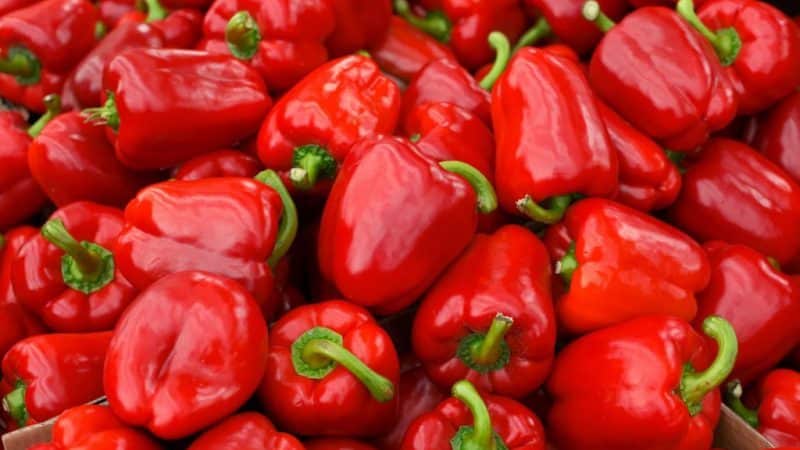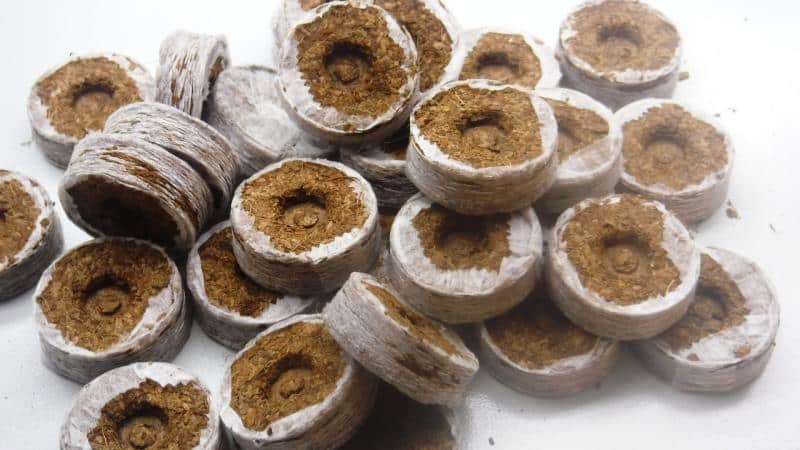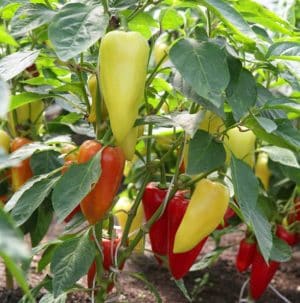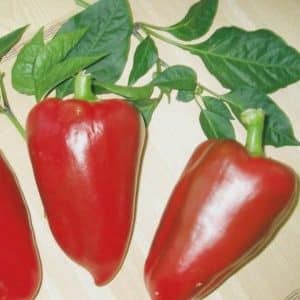Juicy and fragrant pepper variety “Siberian Prince”: review, growing instructions, pros and cons
Pepper is an important ingredient in many traditional dishes. This vegetable has a rich aroma that complements both fresh salads and hot vegetable stews. The fruits contain a large amount of useful substances, which makes it possible to use pepper in folk medicine.
Pepper is considered a heat-loving and light-loving crop. Despite this, there are many varieties that can grow outdoors, even in regions with a cool climate. One of them is the Siberian Prince pepper. What is good about this variety and how to grow it on your site - read on.
What type of pepper is this?
Siberian Prince is a pepper variety that was bred by domestic breeders. Entered into the register in 2006, recommended for cultivation in the West Siberian region.
Advice! Seeds from the fruits of the Siberian Prince are suitable for cultivation. This is a varietal pepper, from the harvest of which plants are obtained that retain all the positive characteristics.
Distinctive features
Pepper Siberian Prince is distinguished by its immunity to weather changes. He is not afraid of cold snaps and high temperatures.
The bushes of this variety produce beautiful small red fruits. They have a cone-shaped shape and a uniform, rich color.
 Another characteristic feature of the Siberian Prince is its bright and rich aroma. The taste of its fruits is sweet, with a slight sourness, the flesh is dense and juicy.
Another characteristic feature of the Siberian Prince is its bright and rich aroma. The taste of its fruits is sweet, with a slight sourness, the flesh is dense and juicy.
Pepper contains a large amount of vitamins:
- B – has a positive effect on the condition of the liver and skin;
- A – has a beneficial effect on vision and promotes the removal of harmful substances from the body;
- C – strengthens the immune system and improves metabolism.
This variety is suitable for fresh consumption. It complements salads perfectly. Retains its taste in hot dishes. The Siberian Prince is also used for canning and stuffing, thanks to its juicy pulp it does not lose its shape.
Main characteristics
The description of the Siberian Prince will certainly please beginning gardeners. This is one of the most unpretentious varieties with high yield.
Characteristics of the Siberian Prince:
| Parameter | Indicators |
| Bush type | Tall. The bush reaches a height of 1–1.5 m. It produces an average amount of foliage. Plants are medium spreading. The stems are powerful and durable. The leaf blade is medium-sized, slightly wrinkled. The inflorescences are simple. |
| Growing method | This variety is cold-resistant. Suitable for growing in open and protected ground. In regions with cold climates, it is recommended to grow peppers under film cover. |
| Productivity | The variety is high-yielding. From 1 sq. m harvest up to 5 kg of fruit. |
| Fruit | Small size. The weight of each specimen varies between 80–150 g. Unripe fruits are yellow-green. The color of ripe berries is deep red inside and out. The skin is glossy. The walls are 0.5 cm thick. The taste of the vegetable is sweet with a bright peppery aroma and mild sourness. The pulp is juicy. The number of chambers in each fruit varies from 3 to 4. |
| Transportability | High. Siberian Prince pepper is not damaged when transported over long distances. Can be stored for more than 1 month. |
| Ripening time | Belongs to early ripening varieties.The first fruits ripen 105–115 days after sowing the seeds. |
| Disease resistance | High. There is immunity to most diseases characteristic of nightshade crops. |
Preparation for cultivation
Pepper is recommended for growing in seedlings. Otherwise, the vegetable will not have time to ripen before frost.
Before sowing, the seeds need to be prepared. This will speed up germination, increase resistance to adverse environmental factors and prevent seedlings from becoming infected with infections:
- The seeds are sorted. Remove dark and damaged specimens with traces of fungus and mold.
- Planting material for 15–20 minutes. soaked in a solution of potassium permanganate. Then it is washed under running water.
- Seeds are germinating. They are kept for 5 hours in warm water. Then wrap it in a damp piece of gauze. Cover with film and place in a warm place for 2-3 days. During this time, the planting material should hatch.
Pepper does not tolerate picking well. Therefore, experienced gardeners recommend planting it in peat pots or tablets. Growing seedlings in boxes is also acceptable.
Soil for peppers is purchased in stores. A universal and special mixture for nightshade crops is suitable.
Prepare soil for peppers yourself. To do this, mix chernozem, peat and sand in equal proportions.
Treat the soil with a dark pink solution of potassium permanganate, boiling water, or calcinate it in the oven.
Growing seedlings
Pepper seeds are sown 80 days before the intended planting in a permanent place - that is, at the end of February or early March.
Advice! It is recommended to treat planting material against fungal infections. In addition to the above remedies, Fitosporin and ash solution are used.
Planting pepper
Three methods are used to grow pepper seedlings. The technology of each of them has its own nuances:
- General box. This option is less suitable than others for growing peppers. Soil is poured into the soil so that there are three free centimeters left to the edge of the container. The earth is moistened abundantly with warm water. Seeds are laid out in rows on the soil. The distance between the rows should be 3 cm, and between the seeds - 2. The planting material is sprinkled with a 1.5 cm layer of earth on top. The plants are pricked after two true leaves appear on them.
- Peat tablets. The blanks are placed in a deep container with the hole facing down and filled with boiling water. As the tablets swell, the liquid is added. When the blanks turn into bags, they are turned over, but left in the container. Sow one seed into each peat tablet, deepening it 1 cm.

- Without land. Place two layers of paper napkins into a two-liter bottle cut lengthwise. They are moistened with warm water. Planting material is laid out in rows on top. Cover with two more layers of paper, which is moistened with warm water. Plants are planted in separate containers after cotyledon leaves appear on them.
In all cases, containers with planting material are covered with film and placed in a warm place. Plants do not need light until the first shoots appear.
Note! If you leave less distance between the seeds, the seedlings will be shaded and stretched.
Further care
To grow healthy and strong seedlings, you need to properly care for them. There are several tricks that every gardener needs to know:
- After the first shoots appear, the film is removed and the seedlings are placed in a well-lit place. At this stage, the plants need room temperature.

- To prevent pepper seedlings from leaning to one side, you need to periodically rotate the pots relative to the light source.
- 21–38 days after the appearance of the first shoots, true leaves form on the pepper. At this stage, it is picked (if the seeds were sown in a common box). Drainage is poured into the bottom of individual pots and the plants are buried no more than half a centimeter. After picking, water the peppers generously. The next time the soil is moistened no earlier than 2 weeks later.
- During the entire period of growing seedlings, peppers are fed 2 times: 14 days after picking and 14 days after the previous feeding. Purchased products (“Krepysh”, “Mortar”, “Agricola”) or vermicompost are used as fertilizer.
- Water the pepper only at the root. The liquid should be at room temperature.
- 12 days before transplanting the pepper to a permanent place, the seedlings begin to harden. She is regularly taken outside or to balcony during warm times of the day.
Pepper does not tolerate picking well. To speed up the adaptation of plants after the procedure, you need to know several nuances:
- When picking, hold the seedlings only by the leaves. This prevents damage to the stem.
- For picking pepper, it is recommended to use containers with a volume of 100–160 ml. Drainage (broken ceramics, small crushed stone, crushed brick) is poured into the bottom. This reduces the risk of seedlings becoming infected with blackleg.
Seedlings can be grown not only at home, but also in greenhouse. In the first case, the plants turn out to be slightly elongated, and in the second, stronger.
Features of growing the variety and possible difficulties
Siberian Prince pepper is planted in a permanent place in early June, when the soil temperature reaches +15 °C.In cold regions it is grown under film covers, in cities with temperate and southern climates - in open ground.
Siberian Prince - tall pepper. He must be tied up. They use synthetic thread that is not susceptible to rotting from moisture. It is necessary to form a bush.
This variety responds well to fertilizing. When applying phosphorus and potassium fertilizers, its yield increases significantly.
To plant the Siberian Prince, a 70x40 pattern is used. For 1 sq. m can accommodate no more than 3 plants.
Picking to a permanent place
For peppers, it is important to choose a suitable area of the garden. His don't put in place, where nightshade crops grew the year before. There are no beds of potatoes and hot peppers near the peppers.
The beds for pepper are prepared in advance. To do this, they are dug up to a depth of 20 cm and cleared of weeds. For 1 sq. m add 5 kg of rotted manure and 50 g of potassium and phosphorus compounds. Fertilizers are mixed with soil.
In the spring, the soil is dug up again. It is mixed with ammonium nitrate and poured over a hot solution of copper sulfate (1 tablespoon of sulfate per 10 liters of water).
Pepper does not tolerate heavy soils. To lighten the soil, the top layer is mixed with sand. When acidity is high, ash is added to the soil.
Pour 1 tbsp into the pepper holes. l. ash and long-acting fertilizers. Then the plants are placed there along with a lump of earth. The root collar is not buried.
Note! Different varieties of peppers easily cross-pollinate with each other. Therefore, neutral tall crops (corn or tomatoes) must be planted between them.
After picking, the pepper is watered with warm water. The beds are covered with film at night to prevent plant death due to frost.
Rules of care
To get a rich pepper harvest, gardeners use several tricks. Here are some of them:
- Root feeding plays an important role. They are applied 4 times per season. Alternate chicken manure, diluted in a ratio of 1:10, and complex mineral fertilizers, including potassium and phosphorus.

- Be sure to use foliar feeding. One option is to spray the pepper with a product made from 10 liters of water and 1 tbsp. l. nitrophoska.
- All lower stepsons and leaves are removed from the bush up to the main fork and inside the crown. It is important to ensure that the inflorescences and ovaries are not shaded. To do this, shorten long shoots and remove excess leaves.
- To increase the yield of the bush, the central flower at the first branch they are torn off.
- To attract insects that pollinate plants and bushes during flowering sprinkled with sweet water. To prepare it, 10 liters of water are mixed with 2 g of boric acid and 100 g of sugar.
- Pepper beds mulch straw (rotten).
- Water the pepper (provided there is mulch) once every 9 days. For each plant use 2-3 liters of water.
Typical diseases and pests
The Siberian Prince variety is characterized by increased resistance to nightshade diseases. It is rarely affected by late blight, rot, and black leg.
More often the plant is attacked by pests. Gardeners do not recommend using chemicals to protect pepper (if it is not grown in industrial quantities). Home remedies are safer:
- Medvedka. To protect plants from this pest, crushed eggshells are poured into the holes and around the bushes.
- From aphids, whiteflies, cutworms and slugs plants will be protected by spraying with an ash solution (2 tbsp. ash per 5 liters of water) or whey (1.5 liters of whey per 10 liters of water).Another option is to sprinkle the plant leaves with crushed wood ash.
- Colorado potato beetle They are collected from the bushes by hand.
To eliminate the possibility of plant infection, it is important to follow the basic rules of prevention. They come down to disinfecting garden tools that interact with bushes, following the rules of watering, pinching and crop rotation.
Advantages and disadvantages of the variety
Advantages of the Siberian Prince:
- high productivity;
- excellent taste of fruits;
- immunity to diseases nightshade crops;
- cold resistance;
- the possibility of using seeds from fruits for planting;
- versatility of application.
The variety has no significant disadvantages. Some gardeners consider the need for formative pruning and pinching to be a disadvantage.
Reviews
Reviews from gardeners about the Siberian Prince are mostly positive. This variety is ideal for growing in the Russian climate.
Irina, Moscow: “I have been growing Siberian Prince pepper for three years under film cover. This is my favorite variety. The fruits are small and very tasty. They look aesthetically pleasing when fresh and pickled. To attract pollinating insects, I plant tobacco and basil between the rows.”
Oleg, Kyiv: “I really like the variety. The peppers grow bright and beautiful, just like in the photo. The variety does not get sick and gives a good harvest. I organized artificial watering, so I can not appear at the dacha for a long time without fear that my beds will die.”
Conclusion
Siberian Prince is a variety that will appeal to both experienced gardeners and beginners. He rarely gets sick and is not afraid of short-term drops in temperature, which makes growing crops easier.
In addition to being easy to care for, this pepper is distinguished by its bright appearance, rich aroma and excellent taste. It is good both fresh and pickled. To obtain a rich harvest, it is necessary to follow agricultural cultivation techniques and avoid pests. Seeds from the fruits of the Siberian Prince are suitable for growing a new crop.